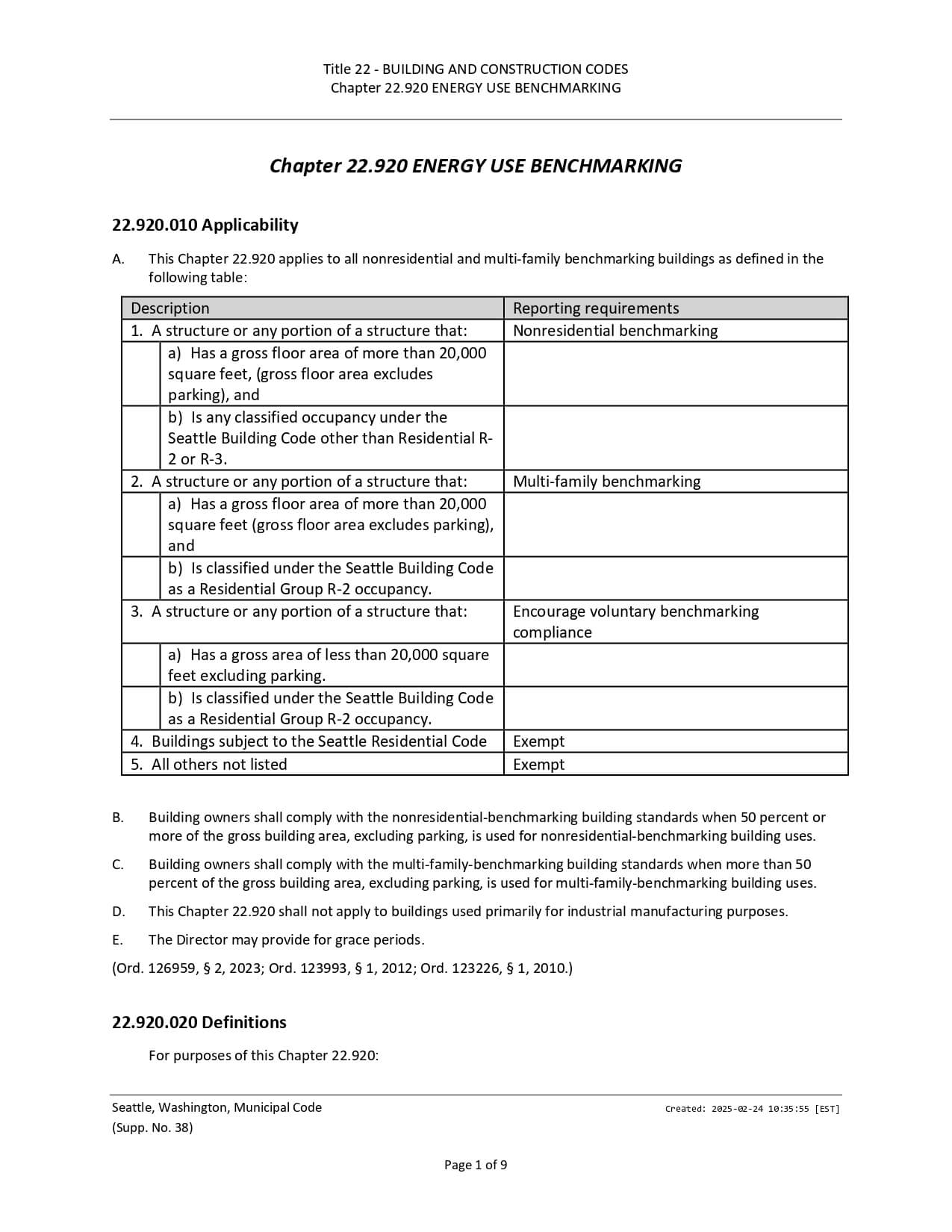Seattle Building Performance Standard: What Businesses Must Do to Stay Compliant
Understanding Seattle’s benchmarking and energy efficiency regulations for commercial and multifamily buildings
Seattle has taken a major step toward reducing greenhouse gas emissions and improving building efficiency by strengthening its Building Performance Standard (BPS). The city’s benchmarking and energy efficiency regulations apply to nonresidential and multifamily buildings over 20,000 square feet, requiring them to track and report energy use annually.
If you own or manage a commercial property in Seattle, you must ensure your building complies with these new regulations to avoid penalties and take advantage of energy-saving opportunities. This guide breaks down the benchmarking requirements, compliance deadlines, and best practices for optimizing your building’s performance.
Who Must Comply With Seattle's BPS Regulations?
Seattle’s BPS regulation (Chapter 22.920) applies to a wide range of buildings based on their size and function.
Covered Buildings:
- Nonresidential buildings over 20,000 square feet (excluding parking).
- Multifamily buildings (R-2 occupancy) over 20,000 square feet (excluding parking).
Voluntary Benchmarking Encouraged for:
- Multifamily residential buildings under 20,000 square feet.
- Buildings classified under the Seattle Residential Code.
Exempt Buildings:
- Industrial manufacturing buildings.
- Buildings used primarily for residential R-3 occupancy.
Building owners must comply with nonresidential benchmarking standards if at least 50% of the gross floor area is used for nonresidential purposes. Similarly, buildings where more than 50% of the space is classified as multifamily must follow the multifamily benchmarking standards.

Key Compliance Requirements
Seattle’s Building Performance Standard requires affected properties to:
1. Track energy use using ENERGY STAR Portfolio Manager
Building owners must set up an account and input monthly energy data.
2. Submit an annual energy benchmarking report to the City of Seattle
Reports must include accurate energy consumption data.
3. Verify energy data for accuracy
This includes checking meter readings and confirming utility data submissions.
4. Meet interim and long-term performance targets
Seattle’s energy efficiency requirements will become stricter over time.
Seattle’s Office of Sustainability & Environment (OSE) oversees compliance and may allow grace periods for reporting delays.
Why Compliance Matters for Your Business
Seattle's benchmarking initiative is more than just a reporting requirement it’s a tool to improve building performance, reduce costs, and support sustainability efforts.
- Avoid Penalties – Noncompliance may result in fines and enforcement actions.
- Lower Energy Costs – Identifying inefficiencies can help reduce utility bills.
- Enhance Property Value – Energy-efficient buildings are more attractive to tenants and investors.
- Future-Proof Operations – Seattle may implement stricter energy performance targets in the coming years.

Steps to Ensure Compliance
1. Set Up Energy Tracking
- Determine if your building meets the benchmarking threshold.
- Create an ENERGY STAR Portfolio Manager account and enter utility data.
- Work with tenants to collect energy use information if necessary.
2. Submit Annual Benchmarking Reports
- Gather 12 months of energy data.
- Review for accuracy and completeness.
- Submit to the City of Seattle by the deadline.
3. Improve Energy Efficiency
- Upgrade lighting to LEDs and install smart controls.
- Optimize HVAC performance with energy-efficient heat pumps.
- Identify high-energy-use systems and prioritize retrofits.
4. Plan for Future Performance Targets
Seattle’s regulations may require additional energy reductions beyond benchmarking. Property owners should:
- Set long-term energy efficiency goals.
- Consider building electrification and renewable energy adoption.
- Stay updated on new city requirements and incentive programs.
The Future of Seattle’s Building Performance Standards
Seattle’s commitment to energy efficiency and carbon reduction will continue to evolve. Businesses must be prepared for:
- Stricter energy use limits in future updates to the BPS.
- Additional electrification requirements to phase out natural gas systems.
- New reporting and compliance deadlines to accelerate emissions reductions.
By acting now, businesses can stay ahead of regulations, reduce costs, and improve operational efficiency while contributing to Seattle’s climate action goals.











